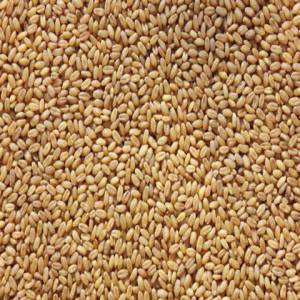Description
Wheat: The Foundation of Flour and Beyond
Wheat ( Triticum aestivum ), a globally significant cereal grain, forms the backbone of countless foods and industries. This detailed description explores its diverse varieties, uses, and nutritional profile.
Varieties: Wheat boasts a wide array of varieties, each with unique characteristics impacting baking properties, yield, and disease resistance. Key distinctions include:
- Hard Wheat: High in protein, ideal for bread making due to its strong gluten development, resulting in chewy, elastic loaves. Further categorized into Hard Red Winter and Hard Red Spring wheat, differing primarily in planting season and protein content.
- Soft Wheat: Lower in protein, producing a weaker gluten structure, suited for cakes, pastries, and crackers where a tender crumb is desired. Commonly used in confectionery applications.
- Durum Wheat: A high-protein wheat used primarily to make semolina, a coarse flour used in pasta, couscous, and other Mediterranean staples. Its high gluten content provides a firm texture.
Uses: Wheat's versatility extends far beyond flour:
- Flour: The most common use, forming the basis for bread, pasta, pastries, cakes, crackers, and countless other baked goods. Different wheat varieties produce flours with varying protein levels and baking characteristics.
- Breakfast Cereals: Wheat flakes, shredded wheat, and other breakfast cereals are widely consumed, providing a convenient and often fortified source of nutrients.
- Animal Feed: A significant portion of wheat production is dedicated to animal feed, contributing to livestock nutrition.
- Beer Production: Wheat malt is a key ingredient in many beer styles, impacting flavor and texture.
- Biofuel Production: Research is ongoing into using wheat straw and other byproducts for biofuel production, contributing to sustainable energy solutions.
Nutritional Profile (per 100g of whole wheat):
- Calories: Approximately 340
- Carbohydrates: 70-75g (including dietary fiber)
- Protein: 13-15g
- Fiber: 10-12g
- Fat: 2-3g
- Vitamins: Provides various B vitamins (thiamin, riboflavin, niacin), along with smaller amounts of Vitamin E.
- Minerals: Good source of iron, magnesium, selenium, and phosphorus.
Note: Nutritional content varies depending on the type of wheat, processing methods (whole wheat vs. refined), and growing conditions. Refined wheat flour often lacks much of the fiber and nutrients present in whole wheat.
Benefits of Whole Wheat:
- High Fiber Content: Promotes digestive health, regulates blood sugar levels, and may contribute to weight management.
- Rich in Nutrients: Provides essential vitamins and minerals.
- May Reduce Risk of Chronic Diseases: Studies suggest that whole wheat consumption may be associated with a lower risk of heart disease, type 2 diabetes, and certain cancers.
Potential Drawbacks:
- Gluten Content: Individuals with celiac disease or gluten sensitivity must avoid wheat products.
- Phytic Acid: Contains phytic acid, which can interfere with the absorption of certain minerals. Soaking, sprouting, or fermenting wheat can help reduce phytic acid content.
Conclusion:
Wheat remains a cornerstone of the global food system, offering a versatile and nutritious grain with wide-ranging applications. Understanding the different varieties and nutritional aspects of wheat allows for informed choices to maximize its benefits and minimize potential drawbacks.
